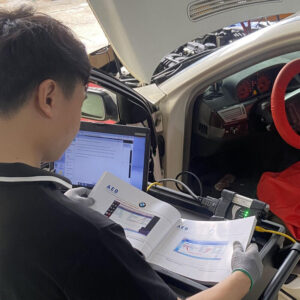

How to Solve Audi P0037 Error – Oxygen Sensor Heater Problem
Contents
- 1. What Does Audi P0037 Error Code Mean?
- 1.1. Common Causes Behind the P0037 Code in Audi Vehicles
- 1.2. Symptoms of P0037 Audi Fault Code
- 2. Required Tools and Software for Diagnosis
- Essential Tools
- Recommended Diagnostic Software
- 3. Step-by-Step Guide to Fix P0037 on Audi
- 4. Conclusion
- 5. Need Professional Assistance? Contact AutoExplain!
The diagnostic trouble code (DTC) P0037 on Audi vehicles relates to the oxygen sensor system, specifically the heated oxygen sensor (HO2S) for Bank 1, Sensor 2. This error code indicates a low voltage condition in the heater control circuit of the downstream oxygen sensor. The purpose of the heated oxygen sensor is to monitor the oxygen levels in the exhaust gases, ensuring the engine runs efficiently and meets emission standards. If this sensor malfunctions, it can affect engine performance and fuel economy.
1. What Does Audi P0037 Error Code Mean?
The diagnostic trouble code P0037 indicates a problem within the heater control circuit of the Bank 1, Sensor 2 oxygen sensor in your Audi. To fully grasp this, let’s break down what that means. Your Audi’s exhaust system is equipped with oxygen sensors, also known as heated oxygen sensors (HO2S). These sensors play a vital role in monitoring the amount of oxygen in the exhaust gases after the combustion process. This information is crucial for the Engine Control Unit (ECU) to regulate the air-fuel mixture, ensuring efficient engine performance and minimizing harmful emissions.
There are typically two oxygen sensors for each bank of cylinders (Bank 1 and Bank 2, if applicable). Sensor 1 is located upstream of the catalytic converter, primarily used for fuel trim control. Sensor 2 is positioned downstream of the catalytic converter and its main job is to monitor the efficiency of the catalytic converter. The P0037 error specifically points to a “low voltage” condition in the heater circuit of the downstream oxygen sensor (Sensor 2) on Bank 1.
The “heater” element within the oxygen sensor is designed to bring the sensor up to its operating temperature quickly, especially during cold starts. This ensures accurate readings even before the exhaust gases are hot enough to do so. If the ECU detects an abnormally low voltage in this heater circuit, it triggers the P0037 code and illuminates the Check Engine Light (CEL) on your dashboard. Understanding the function of these components is the first step towards effectively addressing this issue. This error signifies a potential disruption in the efficient operation of your emissions control system. Let’s delve deeper into what might be causing this.
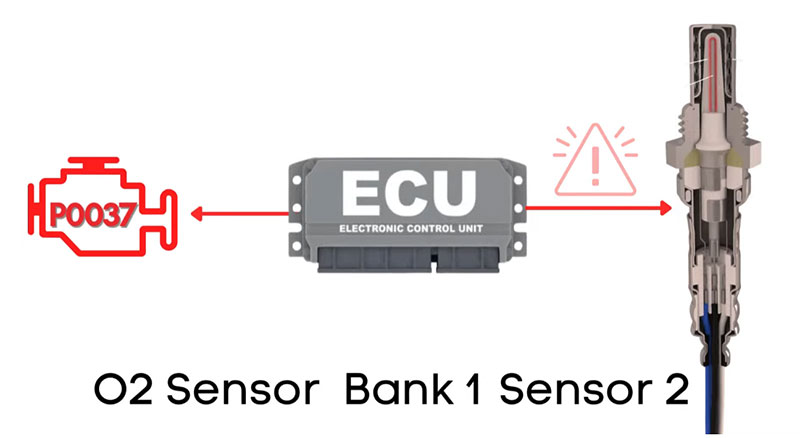
1.1. Common Causes Behind the P0037 Code in Audi Vehicles
Several factors can contribute to the dreaded P0037 error code appearing in your Audi. Identifying the root cause is essential for a successful repair. Here are some of the most common reasons:
-
Faulty Oxygen Sensor (Bank 1, Sensor 2): Like any component, the oxygen sensor itself can fail over time. The heating element within the sensor can degrade or burn out, leading to a low voltage condition. This is a very frequent cause of the P0037 error.
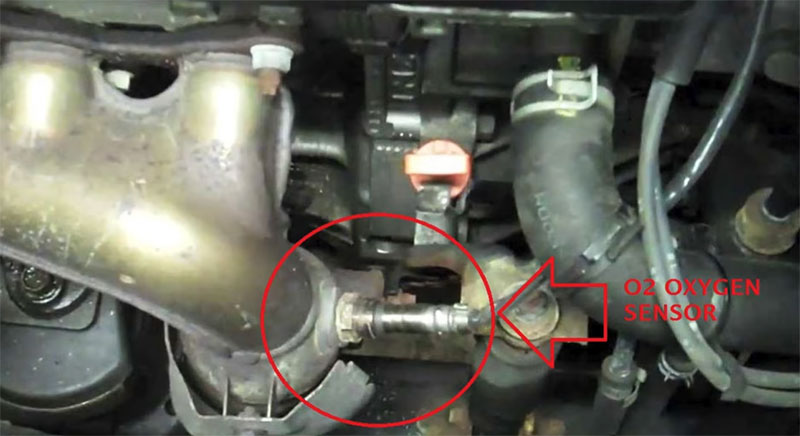
-
Damaged Wiring or Connector Issues: The electrical wiring and connectors leading to the oxygen sensor are exposed to harsh conditions, including heat, vibrations, and moisture. This can result in frayed, broken, or corroded wires, as well as loose or damaged connectors. These issues can disrupt the electrical flow to the heater circuit, causing a low voltage reading. A short circuit in the wiring can also trigger this code.
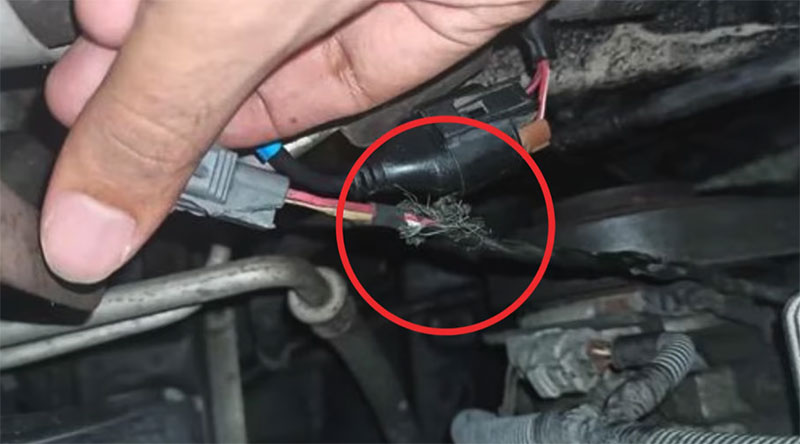
-
Blown Fuse or Faulty Relay: The heater circuit of the oxygen sensor relies on a consistent power supply, which is often protected by a fuse and controlled by a relay. If the fuse for the oxygen sensor heater circuit is blown, or if the relay is malfunctioning, the sensor will not receive the necessary power to heat up, resulting in the P0037 code.
-
Engine Control Unit (ECU) Malfunction: While less common, a fault within the ECU itself can sometimes lead to incorrect readings or prevent the ECU from properly controlling the oxygen sensor heater circuit. This is usually diagnosed after ruling out other more likely causes.
-
Exhaust System Leaks: Although not directly related to the electrical circuit, leaks in the exhaust system near the oxygen sensor can sometimes affect its readings and potentially contribute to related errors. However, P0037 specifically points to the heater circuit.
It’s important to systematically investigate each of these potential causes to pinpoint the exact reason for the P0037 error in your Audi. A thorough inspection can save you time and unnecessary expense.
1.2. Symptoms of P0037 Audi Fault Code
When your Audi throws a P0037 error code, it often manifests through several noticeable symptoms. Being aware of these signs can help you identify the problem early and seek timely resolution. Here are the common symptoms associated with the P0037 fault code:
-
Illuminated Check Engine Light (CEL): This is the most obvious indicator. The CEL will light up on your dashboard to alert you that the ECU has detected a problem with the vehicle’s emissions system, in this case, the P0037 error.
-
Increased Fuel Consumption: A malfunctioning oxygen sensor can provide incorrect data to the ECU, leading to an imbalanced air-fuel mixture. Often, this results in the engine running richer than necessary, meaning it’s using more fuel than it should. This can lead to a noticeable decrease in your Audi’s fuel economy.
-
Rough Engine Performance: An improper air-fuel mixture, caused by faulty oxygen sensor data or a sensor that isn’t functioning correctly due to a heater circuit issue, can lead to rough idling, hesitation during acceleration, and overall uneven engine performance. You might experience a lack of power or a jerky feeling while driving.
-
Unusual Exhaust Smell: Inefficient combustion due to incorrect oxygen sensor readings can result in unburnt fuel exiting the exhaust system. This can produce a strong, gasoline-like odor emanating from your Audi’s tailpipe.
-
Difficult Engine Start: In some instances, particularly in cold weather, a malfunctioning oxygen sensor can make it harder for the engine to start. The ECU relies on initial readings from the oxygen sensors to optimize the starting fuel mixture. If the sensor heater isn’t working, it can take longer for the sensor to provide accurate data.
-
Failed Emissions Test: If your Audi has a P0037 error, it is highly likely to fail an emissions test. The oxygen sensors are critical components for monitoring and controlling exhaust emissions. A fault in their operation will prevent your vehicle from meeting the required standards.
Experiencing one or more of these symptoms alongside the Check Engine Light strongly suggests a problem with the oxygen sensor heater circuit, as indicated by the P0037 code. Addressing these issues promptly is crucial for maintaining your Audi’s performance, fuel efficiency, and ensuring it complies with environmental regulations.
2. Required Tools and Software for Diagnosis
Essential Tools
- OBD-II Scanner: Devices such as VAS 6154 or VAS 5054A are recommended for reading and clearing fault codes.
- Multimeter: Used to measure voltage and resistance in the oxygen sensor circuit.
- Basic Hand Tools: Wrenches, screwdrivers, and pliers to access and replace the oxygen sensor.
- Voltage Tester: To check the power supply to the sensor heater circuit.
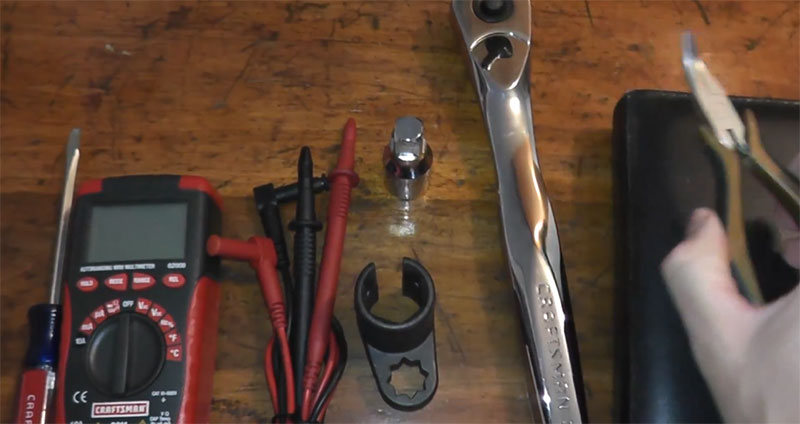
Recommended Diagnostic Software
- ODIS Service & Engineering (Offboard Diagnostic Information System): Diagnostic the vehicle and allows for reprogramming ECU if needed.
=> Get ODIS Service Software Download File Here!
=> Get ODIS Engineering Software Download File Here!
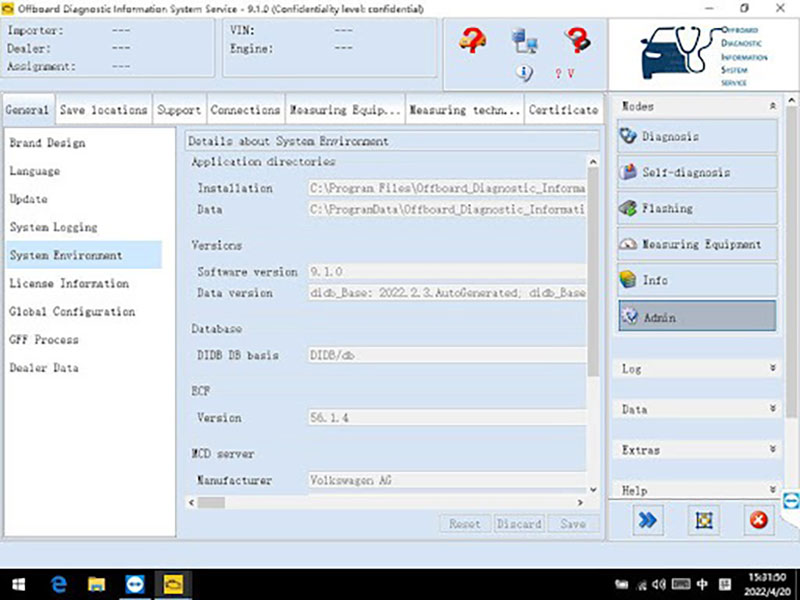
3. Step-by-Step Guide to Fix P0037 on Audi
Step 1: Scan and Confirm the Error Code
-
Locate the Diagnostic Port: The OBD-II diagnostic port is typically located under the dashboard on the driver’s side of your Audi.
-
Connect the OBD-II Scanner: Plug your OBD-II scanner into the diagnostic port.
-
Turn on the Ignition (without starting the engine): This will power up the vehicle’s electrical system and allow the scanner to communicate with the ECU.
-
Retrieve and Record Error Codes: Follow your scanner’s instructions to read and record all stored diagnostic trouble codes. Note down the P0037 code and any other related codes that may be present.
-
Check Live Data: If your scanner supports it, access the live data stream for the oxygen sensors (Bank 1, Sensor 2). Look for parameters related to the heater circuit voltage or current. An abnormally low or zero reading could indicate a problem.
Some error codes related to the P0037 Audi DTC:
Directly Related to Oxygen Sensor Heater Circuit Issues:
| Code | Description |
|---|---|
| Audi P0030 | HO2S Heater Control Circuit (Bank 1, Sensor 1) |
| Audi P0031 | HO2S Heater Control Circuit Low (Bank 1, Sensor 1) |
| Audi P0032 | HO2S Heater Control Circuit High (Bank 1, Sensor 1) |
| Audi P0050 | HO2S Heater Control Circuit (Bank 2, Sensor 1) |
| Audi P0051 | HO2S Heater Control Circuit Low (Bank 2, Sensor 1) |
| Audi P0052 | HO2S Heater Control Circuit High (Bank 2, Sensor 1) |
| Audi P0053 | HO2S Heater Resistance (Bank 1, Sensor 1) |
| Audi P0054 | HO2S Heater Resistance (Bank 1, Sensor 2) |
| Audi P0057 | HO2S Heater Control Circuit Low (Bank 2, Sensor 2) |
| Audi P0058 | HO2S Heater Control Circuit High (Bank 2, Sensor 2) |
Other Related Oxygen Sensor or Emission Control DTCs:
| Code | Description |
|---|---|
| Audi DTC P0136 | O2 Sensor Circuit Malfunction (Bank 1, Sensor 2) |
| Audi DTC P0140 | O2 Sensor No Activity Detected (Bank 1, Sensor 2) |
| Audi DTC P0141 | O2 Sensor Heater Circuit Malfunction (Bank 1, Sensor 2) |
| Audi DTC P0160 | O2 Sensor No Activity (Bank 2, Sensor 2) |
| Audi DTC P0161 | O2 Sensor Heater Circuit Malfunction (Bank 2, Sensor 2) |
Step 2: Perform a Thorough Visual Inspection of the Oxygen Sensor
-
Locate Bank 1, Sensor 2: Refer to your Audi’s repair manual or online resources to pinpoint the exact location of the downstream oxygen sensor on Bank 1. This is usually situated after the catalytic converter on the exhaust manifold of Bank 1 (the bank of cylinders containing cylinder number 1).
-
Visual Inspection: Carefully examine the oxygen sensor, its wiring harness, and the connector for any signs of physical damage. Look for:
-
Cracked or broken sensor housing.
-
Burned, frayed, or cut wires.
-
Loose or corroded electrical connectors.
-
Excessive dirt, oil, or other contamination on the sensor.
-
-
Sensor Condition: If the sensor appears excessively dirty, old (over 80,000-100,000 miles), or visibly damaged, it might be the primary cause of the problem and replacement should be considered.
Step 3: Meticulously Check the Wiring and Connectors
-
Continuity Test: Using your multimeter, perform a continuity test on the wires leading to the oxygen sensor heater circuit. Disconnect the sensor and the ECU (or the relevant connector in between, if known). Check for breaks in the wires.
-
Voltage Test: With the ignition on (engine off), use your multimeter to check for the presence of voltage at the oxygen sensor connector’s heater circuit terminals. Refer to your Audi’s wiring diagram to identify the correct pins. You should typically see battery voltage or a specified voltage depending on the control system.
-
Ground Check: Verify that the ground wire for the heater circuit has good continuity to a known ground point on the vehicle’s chassis.
-
Connector Inspection: Ensure the connector pins are clean, straight, and securely seated. Clean any corrosion with electrical contact cleaner.

Step 4: Investigate the Fuse and Relay
-
Locate the Fuse Box: Consult your Audi’s owner’s manual to find the location of the fuse box(es) and identify the fuse associated with the oxygen sensor heater circuit.
-
Check the Fuse: Visually inspect the fuse for any signs of being blown (broken filament). Even if it looks okay, use your multimeter to perform a continuity test across the fuse terminals to confirm it’s intact. Replace any blown fuse with one of the correct amperage rating.
-
Test the Relay: Locate the relay that controls the oxygen sensor heater circuit (refer to your repair manual). You can test the relay by:
-
Applying power and ground to the control terminals and listening for a click, indicating the relay is switching.
-
Using a multimeter to check continuity across the switched terminals when the relay is activated.
-
Swapping the relay with an identical, known-good relay to see if the problem resolves.
-
Step 5: Consider ECU Software and Adaptive Settings
-
ECU Software Check: If all the electrical connections, fuses, and relays appear to be functioning correctly, and the error persists, there might be an issue with the ECU software.
-
ECU Update (if necessary): Using ODIS Engineering, check if there are any available software updates for your ECU. Sometimes, software glitches can cause false error codes. Follow the software’s instructions for performing an update if one is available.
-
Reset Adaptive Settings: After replacing an oxygen sensor or performing any repairs on the fuel or emissions system, it’s often recommended to reset the ECU’s adaptive settings using diagnostic software. This allows the ECU to learn the new sensor characteristics and optimize fuel trim accordingly.
Step 6: Clear the Fault Code and Conduct a Test Drive
-
Clear the P0037 Code: Use your OBD-II scanner to clear the P0037 diagnostic trouble code from the ECU’s memory.
-
Start the Engine and Monitor: Start your Audi’s engine and check if the Check Engine Light illuminates again.
-
Test Drive: Take your vehicle for a test drive under various driving conditions to see if the Audi P0037 code returns. Pay attention to engine performance, fuel economy, and any unusual smells.
-
Final Scan: After the test drive, perform another scan with your OBD-II scanner to ensure that the P0037 code has not reappeared and that no new codes have been set.
By meticulously following these steps, you can systematically diagnose and address the Audi P0037 error. If you encounter any difficulties or are unsure about any of the procedures, seeking professional assistance from a qualified mechanic is always a wise decision. Remember that having the right tools from autoexplain.com can significantly simplify this process. Our range of high-quality OBD-II scanners and diagnostic tools are designed to make automotive troubleshooting easier and more efficient for both experienced mechanics and DIY enthusiasts. Equip yourself with the best – explore our collection at autoexplain.com today. Our tools are your reliable partners in automotive diagnostics.
4. Conclusion
The P0037 Audi fault code is a common issue related to the heated oxygen sensor’s heater circuit. Addressing this problem promptly can improve fuel efficiency, engine performance, and emission compliance. By following the steps outlined above—scanning for fault codes, inspecting the sensor and wiring, testing the power supply, and updating the ECU if necessary—you can effectively diagnose and repair this issue.
5. Need Professional Assistance? Contact AutoExplain!
If you’re still experiencing issues after attempting the above fixes, AutoExplain is here to help! We provide expert car diagnostic, coding, and programming support to ensure your Audi runs smoothly.
📞 Contact us on WhatsApp: +1(936)2896695
Don’t let error codes slow you down—reach out to us today for professional automotive solutions!

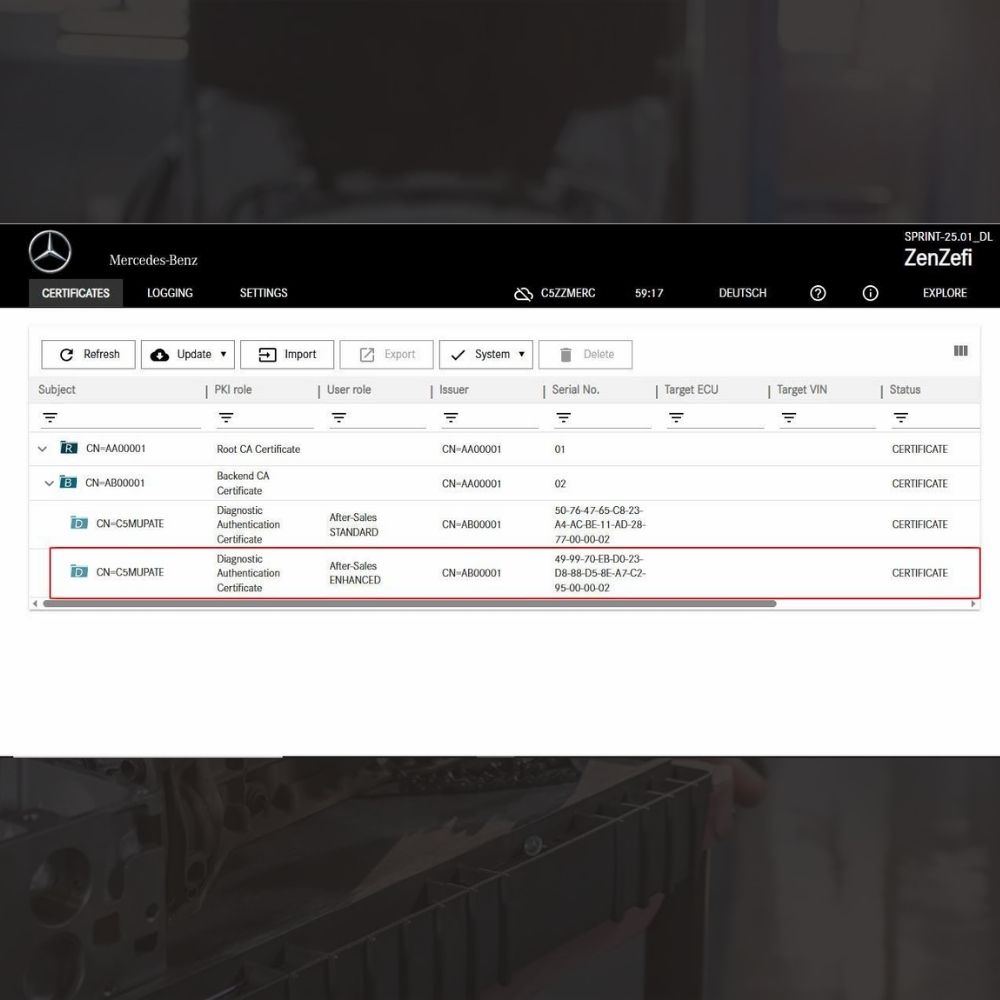
New Mercedes Car Coding Solution with ZenZefi certificate for DTS Monaco 9.02

What is DTS Monaco? Key Functions of DTS Monaco Software
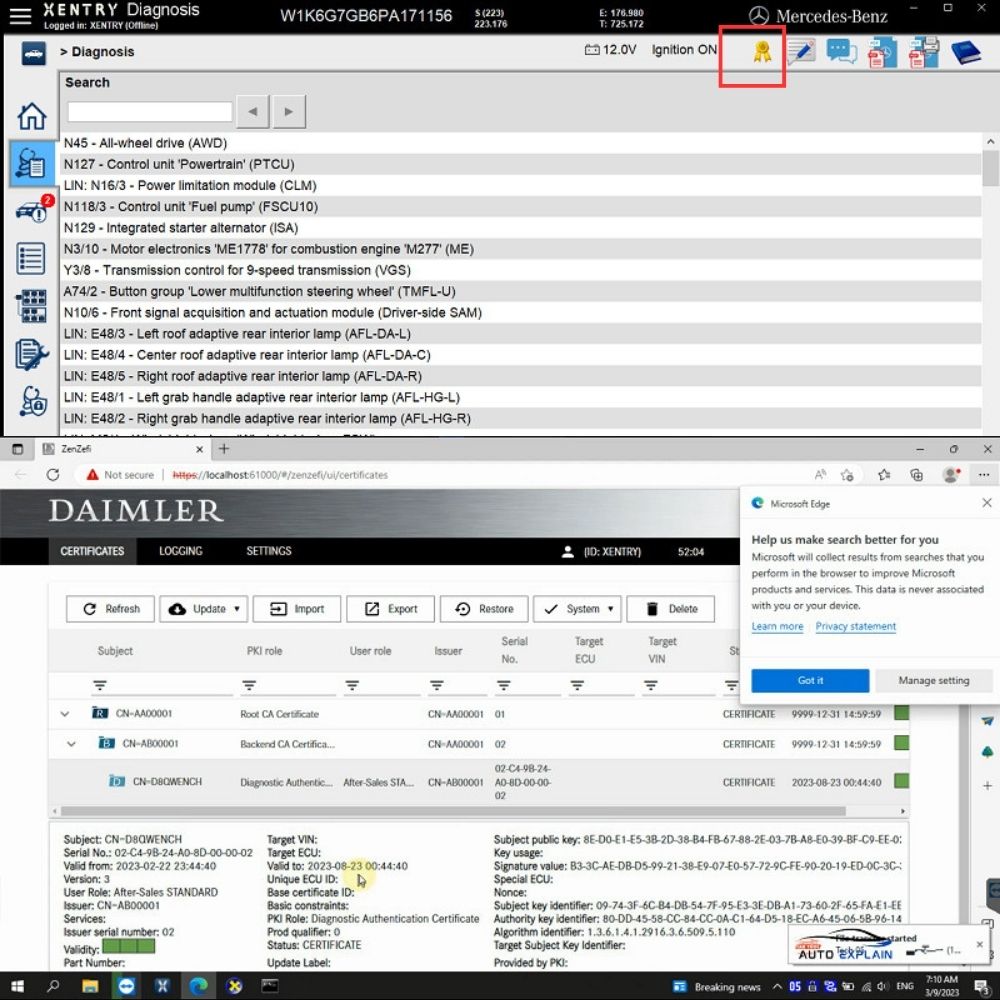
What is the Xentry Certificate Zenzefi? Why You Need It, and When It Is Required?



New Mercedes Car Coding Solution with ZenZefi certificate for DTS Monaco 9.02



